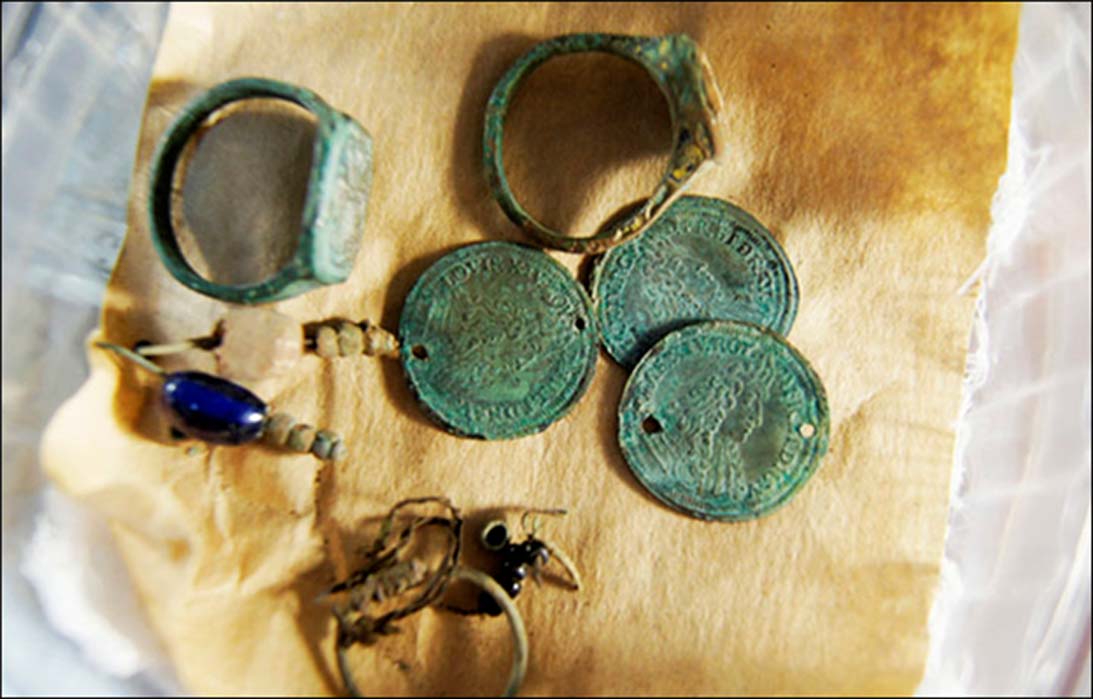Stash of Sun King's Valuables Found Close to Arctic in Siberia
By Olga Gertcyk / The Siberian Times
Over 300 years old, jetons - used in lieu of coins or for counting - were found along with artifacts hoarded by the Northern Selkups. The finding and other intriguing and varied items were made during a dig in Yamalo-Nenets autonomous region, close to the Taz River. Exactly how the 'jetons' which bear Louis XIV's image came to this remote part of Siberia is not known.
Anthropologist Olga Poshehonova said a Russian-German team found 'seven similar counting tokens that depict Louis XIV'. Other discoveries - some dating to the 12th century - were 'several iron knives with handles with enamel decorations produced by Russians' and an intriguing 'lion figurine' of uncertain origin.
The treasure trove included 'brass decorations also made by Russian masters'.
Over 300 years old, the 'jetons' - used in lieu of coins or for counting - were found along with artifacts hoarded by the Northern Selkups.




The French find and other intriguing and varied items were made during a dig in Yamalo-Nenets autonomous region, close to the Taz River. Picture: The Siberian Times, IPDN, Krasny Sever, Natalia Ryabogina
Among the finds were ancient jewelry made in Western Siberia and the Urals, namely 'earrings, noise-making pendants, and a remarkable set of buttons manufactured between the 12th and 18th centuries'.
- The Black Masses of La Voisin: How a Fortune Teller Became a Murderess in the French Royal Court
- Found: Grave of Siberian Noblewoman up to 4,500-Years-Old With Links to Native Americans
One theory as to how the 'coins' reached Russia is that the tsarist government bought metal from items no longer used in European countries. Possibly they were bartered by Russians to the Northern Selkups, who were hunters and fishermen, who also herded reindeer.
Louis XIV reigned France from 1643 to 1715.




Other discoveries - some dating to the 12th century - were 'several iron knives with handles with enamel decorations produced by Russians' and an intriguing 'lion figurine' of uncertain origin. Pictures: Natalia Ryabogina, Yamal-Region
The ancestry of the Selkup people dates to the Neolithic cultures of the 3rd Century BC. These societies were the origin of a wide range of tribes from the Eastern Ural region of Western Siberia.
Today it is estimated there are some 4,300 Selkups living in the watersheds of the Ob River and its tributaries, notably the Vasyugan in Tomsk region, the Pur and Taz in Yamalo-Nenets and the Turukhan in Krasnoyarsk region.
- The Ancient Origins of High Heels – Once an Essential Accessory for Men
- 1,000-year-old grave of Siberian warlord horseman who lost arm in battle revealed
In all some 300 archeological finds were made at two sites. The items will be cleaned and studied during the winter, and will later go on display at Shemanovsky's Museum in Salekhard.
Archeological research will continue next year as a collaboration between the Institute of the problems of the Northern development, SB RAS and the German Archeological Institute.
Top image: One theory as to how the 'coins' reached Russia is that the tsarist government bought metal from items no longer used in European countries. Picture: Natalia Ryabogina
The article ‘Stash of Sun King's valuables found close to Arctic in Siberia’ originally appeared on The Siberian Times and has been republished with permission.

















